
The small fountains of Venice
Powered by |
Le fontanelle di Venezia The small fountains of Venice |
| back | |
Dettagli e documentazione fotografica / Details and photographic documentation
| Dettagli di fusione e finitura | Details of casting and finishing |
|---|---|
| Un accidente inevitabile quando si fa copia di un oggetto metallico mediante calco in sabbia o terra di Francia è l'orbamento dei dettagli. In termini non gergali, questo significa che i particolari minori perdono di rilievo e incisione. Gli angoli si arrotondano, i rilievi si abbassano, gli intagli risultano meno affilati e precisi, le cavità sono meno pronunciate. Le foto a sinistra mostrano la fattura di esemplari originali, mentre quelle a destra le copie maldestre. Le frecce indicano i punti salienti da confrontare. Le ultime due foto pongono a confronto la finitura del bordo del cappello di una fontanella originale con quella di un falso grossolano. Nella prima il segno di giunzione tra la metà superiore e inferiore dello stampo, essendo questo realizzato da un abile artigiano, non ha richiesto operazioni di sbavatura, risultando così precisa da divenire quasi parte del motivo ornamentale. Nella copia a destra, invece, la giunzione dello stampo era così maldestra da causare sbavature di metallo tutt'attorno. Per colmo di ironia, la fontana ottocentesca è stata "sbavata" utilizzando una smerigliatrice angolare elettrica, come si ricava osservando l'andamento dei graffi lasciati dalla grossolana molatura. Significativi sono anche il colore del metallo e la sua grana superficiale. Gli originali sono fusi in terra di Francia, che consente di ottenere finiture molto lisce se non proprio lucide, i falsi invece in sabbia, con finitura granulosa. |
An inevitable consequence when one makes a copy of an ornamental object by means of casting in sand or earth from France is the loss of detail. In practical terms, this signifies that the small details lose their protrusions and grooves. The angles become rounded, the relief are flattened, the results of the indentations are less sharp and precise and the depressions are less pronounced. The photo at the left shows the excellence of the originals meanwhile those at the right a clumsy copy. The arrows indicate the salient points of comparison. The last two photos compare the finishing of the edge of an original fountain cover with a poorly made fake. In the first, the sign of the joining between the superior half and the inferior of the mold, being made by an able artisan, does not require trimming, with the result being precise and becoming part of the ornamental motif. In the copy on the right, in contrast, the joining of the mold was clumsy caused by the trimming of the metal all around. Ironically, the fountain from the 800's has been "trimmed" using an angled electric grinder as you can see from the course of scratches left by the boorish grinding. Significant also are the colors of metal and the superficial texture. The originals were fused in earth of France which allows for a very smooth finishing, almost shiny. The fake however, casted in sand, have a grainy finishing. |
| Originale / Original | Falso / Forgery |
|---|---|
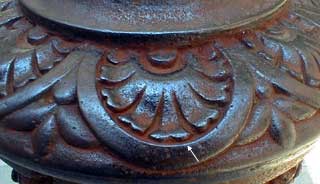 |
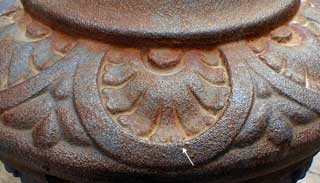 |
| Originale / Original | Falso / Forgery |
|---|---|
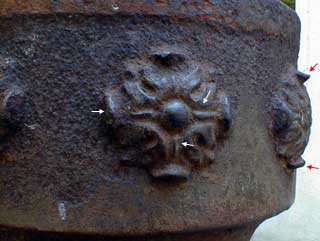 |
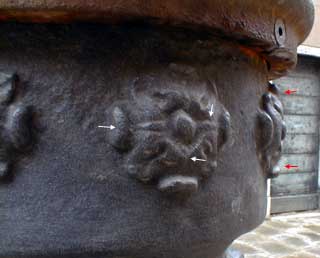 |
| Originale / Original | Falso / Forgery |
|---|---|
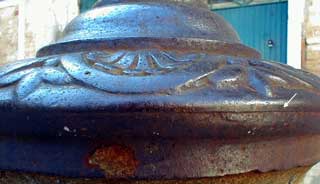 |
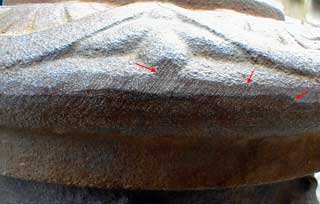 |
foto e testo di Umberto Sartory
back